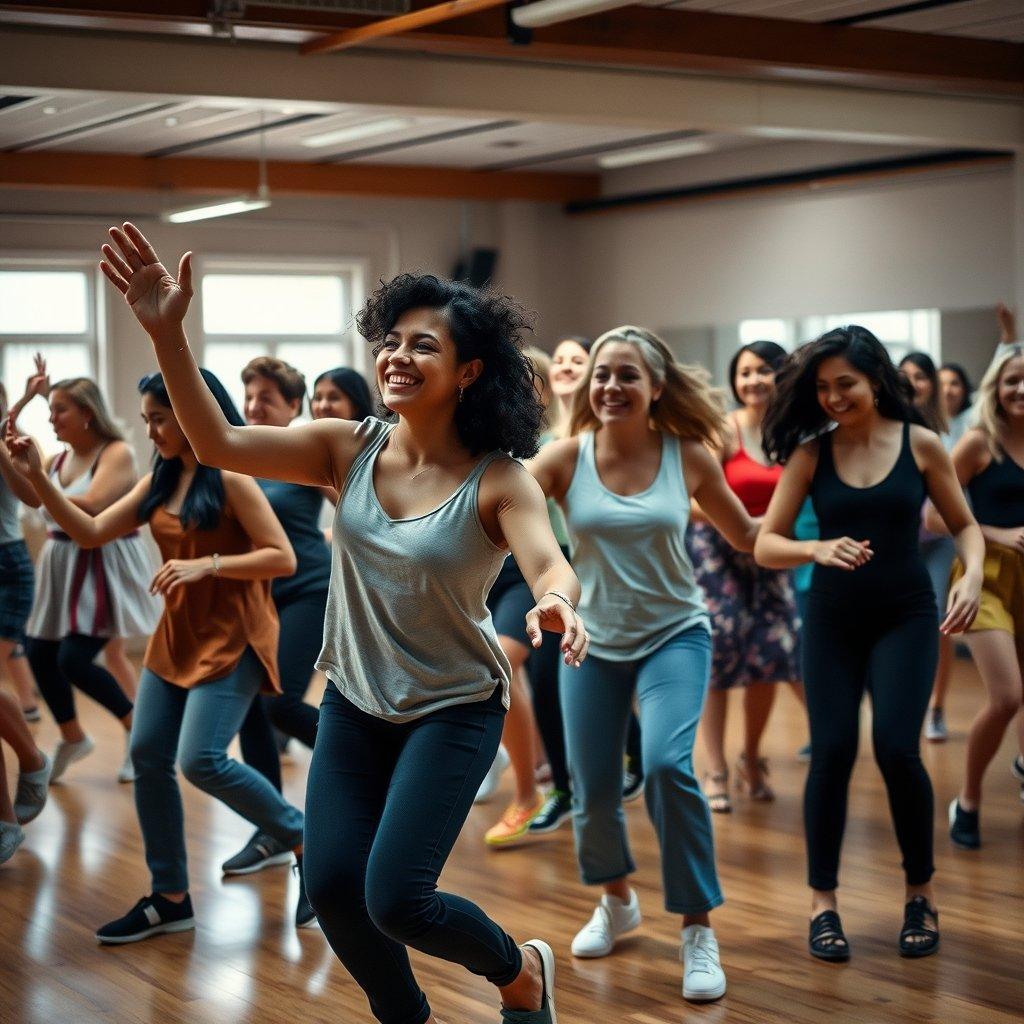The Surprising Health Benefits of Dancing
Dance is not just a form of entertainment but also a powerful tool for improving mood and mental well-being. The physical activity and expressive nature of dance have been found to have numerous positive effects on mental health.
Engaging in dance helps release endorphins, the body's natural mood-boosting chemicals. This surge of endorphins can reduce feelings of stress and anxiety, promote relaxation, and increase overall happiness. Dancing also stimulates the production of serotonin and dopamine, neurotransmitters that play a crucial role in regulating mood and emotions.
Beyond the chemical reactions in the brain, dance can provide an outlet for self-expression and creativity, allowing individuals to channel their emotions through movement. It provides a safe and non-verbal means of communication, creating a sense of connection and belonging. Dance can also increase body awareness and improve self-esteem as individuals learn to move and control their bodies in new ways.
Moreover, dancing often involves social interaction, whether in a class or community setting. This social aspect of dance can combat feelings of isolation and loneliness, boosting mental well-being. It promotes socialization, fosters new friendships, and creates a supportive network. Dancing together allows individuals to share their passion and connect with others, deepening their sense of belonging and overall happiness.
Discovering the Hidden Physical Benefits of Dancing
Dancing is not only a fun and enjoyable activity, but it also offers some remarkable hidden physical benefits. Beyond being a great way to stay active and fit, dancing engages multiple muscle groups in the body, enhancing strength, flexibility, and endurance.
One of the major physical benefits of dancing is improved cardiovascular health. Whether it's salsa, ballet, or hip-hop, dancing gets the heart pumping, which increases blood circulation and supports a healthy cardiovascular system. Regular dance sessions can help lower blood pressure, reduce the risk of heart disease, and improve overall heart health.
In addition to cardiovascular benefits, dancing also boosts bone strength. Many dance forms, such as ballet or tap, involve repetitive movements that put stress on the bones. This helps to increase bone density over time and reduces the risk of osteoporosis. Dancing is an excellent activity for people of all ages to promote strong and healthy bones.
Dance Away Stress: How Movement Can Improve Mental Health
Dancing is not only a fun and enjoyable activity, but it also has numerous health benefits, particularly for our mental well-being. The act of dancing involves both physical movement and creative expression, making it a powerful tool to alleviate stress and improve mental health.
Engaging in dance can help reduce stress levels by releasing endorphins in the brain, which are known as the "feel-good" chemicals. As we move our bodies to the rhythm of music, these natural mood boosters are released, promoting a sense of happiness and overall well-being. Additionally, dancing allows us to temporarily disconnect from daily worries and challenges, enabling us to focus on the present moment and forget about our stressors.
Moreover, dancing also provides a platform for self-expression and emotional release. Whether it's through graceful movements or energetic routines, dance allows individuals to convey their emotions and feelings without the need for words. This can be especially beneficial for those who find it difficult to express themselves verbally, as dancing provides an alternative channel for self-expression and emotional catharsis.
Lastly, participating in group dance activities can foster a sense of community and social connectedness, which are essential for maintaining good mental health. Dancing with others encourages social interaction, cooperation, and support among individuals. This social aspect of dance can help reduce feelings of loneliness and isolation and ultimately contribute to improved overall mental well-being.
Unleashing the Healing Power of Dance: A Holistic Approach
Dancing is not only a delightful and captivating form of self-expression, but it also brings along numerous health benefits. Through the art of dance, individuals can not only enhance their physical well-being but also improve their mental, emotional, and social health. Embracing a holistic approach, dance becomes a powerful tool to unleash the healing potential within each of us.
Physical Health: Dancing is a fantastic way to stay active and maintain physical fitness. Different dance styles engage various muscle groups, enhancing strength, flexibility, and cardiovascular endurance. Regular dancing helps with weight management and improves balance, coordination, and posture. It also boosts circulation, strengthens bones, and reduces the risk of chronic diseases such as heart conditions and osteoporosis.
Mental and Emotional Well-being: Engaging in dance releases endorphins, the feel-good hormones, reducing stress, anxiety, and depression. Dancing allows individuals to let go of their daily worries and immerse themselves in the rhythm and movement. It enhances cognitive abilities, improves memory, and helps maintain mental sharpness. Moreover, dance provides a creative outlet for self-expression, empowering individuals to embrace their emotions and build self-confidence.
Social Connections: Dancing is a social activity that brings people together, fostering new connections and strengthening existing relationships. Participating in dance classes or joining dance communities creates a sense of belonging and camaraderie. It opens up opportunities for meeting new people and expanding social networks. Sharing the joy of dance with others promotes a positive and supportive environment that contributes to overall well-being.
Check out the benefits of Belly Dancing
Or maybe you are interested in pole dancing
Check out all the pole dancing equipment here












